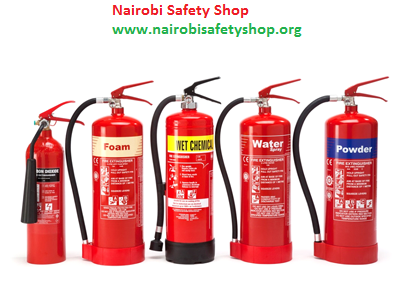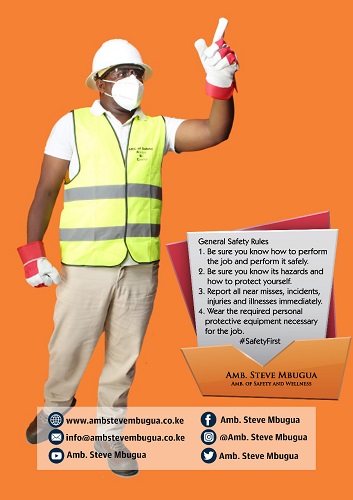Fire safety management is a crucial component of workplace safety, aimed at preventing fire incidents and ensuring effective response and evacuation in case of a fire. It involves a range of activities and measures designed to protect people, property, and assets from the risk of fire. Here’s a detailed guide on fire safety management, including its components, principles, and best practices:
**1. Fire Safety Policy and Planning
Purpose: To establish a comprehensive framework for managing fire safety within the organization.
Components:
• Fire Safety Policy:
o Content: Commitment to fire safety, objectives, responsibilities, and procedures.
o Explanation: A formal document that outlines the organization’s approach to fire safety and sets the expectations for all employees.
• Fire Safety Planning:
o Components: Risk assessment, fire prevention strategies, and emergency response planning.
o Explanation: Ensures that fire safety measures are systematically integrated into organizational operations and prepares the workplace for potential fire incidents.
Explanation: A clear policy and planning process help ensure that fire safety is prioritized and managed effectively across all levels of the organization.
**2. Fire Risk Assessment
Purpose: To identify potential fire hazards and evaluate the risks associated with them.
Components:
• Hazard Identification:
o Examples: Electrical faults, flammable materials, and heating equipment.
o Explanation: Identifies sources of potential fire hazards within the workplace.
• Risk Evaluation:
o Methods: Assess the likelihood and potential impact of identified hazards.
o Explanation: Evaluates the level of risk each hazard poses and determines necessary control measures.
• Control Measures:
o Examples: Implementing fire-resistant materials, regular maintenance of equipment, and safe storage of flammable substances.
o Explanation: Measures taken to mitigate identified risks and reduce the likelihood of a fire occurring.
Explanation: Conducting a thorough fire risk assessment helps in understanding potential fire hazards and implementing effective measures to prevent fires.
**3. Fire Prevention Measures
Purpose: To reduce the risk of fire by implementing proactive safety measures.
Components:
• Housekeeping:
o Examples: Regular cleaning to prevent accumulation of combustible materials.
o Explanation: Maintains a clean and organized environment to minimize fire risks.
• Maintenance:
o Examples: Regular inspections and servicing of electrical systems, heating equipment, and fire protection systems.
o Explanation: Ensures that equipment and systems are functioning correctly and safely.
• Control of Flammable Materials:
o Examples: Proper storage, labeling, and handling of flammable substances.
o Explanation: Minimizes the risk of fire related to hazardous materials.
Explanation: Effective fire prevention measures are crucial for reducing the likelihood of a fire starting and maintaining a safe workplace environment.
**4. Fire Safety Equipment
Purpose: To provide the necessary tools for preventing and responding to fire incidents.
Components:
• Fire Extinguishers:
o Types: Water, foam, CO2, dry powder.
o Explanation: Different types of extinguishers are used for different classes of fires (e.g., electrical, flammable liquids).
• Fire Alarms and Detection Systems:
o Examples: Smoke detectors, heat detectors, fire alarms.
o Explanation: Early detection of fire through alarms and sensors to alert occupants and activate suppression systems.
• Sprinkler Systems:
o Types: Wet pipe, dry pipe, pre-action, and deluge systems.
o Explanation: Automatic systems designed to suppress or extinguish fires by releasing water.
• Fire Blankets:
o Explanation: Used to smother small fires or wrap around individuals to protect them from flames.
Explanation: Properly maintained and strategically placed fire safety equipment is essential for both preventing and managing fire incidents effectively.
**5. Emergency Response and Evacuation Procedures
Purpose: To ensure a well-coordinated and effective response in the event of a fire.
Components:
• Evacuation Plans:
o Examples: Detailed floor plans showing escape routes, exits, and assembly points.
o Explanation: Provides a clear route for occupants to exit the building safely during a fire.
• Emergency Procedures:
o Examples: Steps to be taken when a fire alarm sounds, how to use fire extinguishers, and how to assist individuals with disabilities.
o Explanation: Provides specific instructions on how to respond to a fire emergency.
• Fire Drills:
o Frequency: Regular intervals (e.g., quarterly, annually).
o Explanation: Practice evacuations to ensure that employees are familiar with the procedures and can evacuate quickly and safely.
Explanation: Well-defined emergency response and evacuation procedures ensure that everyone knows what to do during a fire, reducing confusion and enhancing safety.
**6. Training and Awareness
Purpose: To educate employees on fire safety practices and procedures.
Components:
• Fire Safety Training:
o Examples: Use of fire extinguishers, evacuation procedures, and emergency response roles.
o Explanation: Ensures that employees are knowledgeable about fire safety practices and their roles in an emergency.
• Fire Safety Awareness Programs:
o Examples: Safety workshops, fire safety posters, and informational materials.
o Explanation: Keeps fire safety awareness high and reinforces important safety messages.
Explanation: Training and awareness programs are essential for preparing employees to respond effectively to fire emergencies and follow established safety procedures.
**7. Fire Safety Compliance
Purpose: To ensure that fire safety measures comply with legal and regulatory requirements.
Components:
• Regulations and Standards:
o Examples: Local fire codes, National Fire Protection Association (NFPA) standards.
o Explanation: Compliance with regulations and standards ensures that fire safety practices meet legal requirements.
• Inspections and Audits:
o Examples: Regular inspections by fire safety officers, internal audits.
o Explanation: Helps identify compliance issues and ensure that fire safety measures are implemented correctly.
Explanation: Adhering to legal requirements and conducting regular inspections ensure that fire safety measures are effective and up-to-date.
**8. Fire Safety Management Review
Purpose: To evaluate the effectiveness of fire safety measures and identify areas for improvement.
Components:
• Performance Review:
o Examples: Analysis of fire drill results, review of incident reports.
o Explanation: Assesses the effectiveness of fire safety measures and identifies any weaknesses or areas for improvement.
• Continuous Improvement:
o Examples: Updating fire safety policies, enhancing training programs, and improving fire safety equipment.
o Explanation: Ensures that fire safety practices are continuously improved based on feedback and performance evaluations.
Explanation: Regular reviews and improvements help maintain effective fire safety management and adapt to changes in the workplace or fire safety standards.
Effective fire safety management is essential for protecting people, property, and assets from fire risks. By implementing a comprehensive fire safety policy, conducting thorough risk assessments, employing fire prevention measures, and ensuring proper training and equipment, organizations can significantly reduce the likelihood of fire incidents and improve their ability to respond effectively. Continuous review and improvement of fire safety practices ensure that the workplace remains prepared to handle fire emergencies and maintain a high standard of safety.
READ MORE
Safety Video
Largest Fire Safety Equipment Company
First Aid Management
Best First Aid and Fire Safety Trainer



















